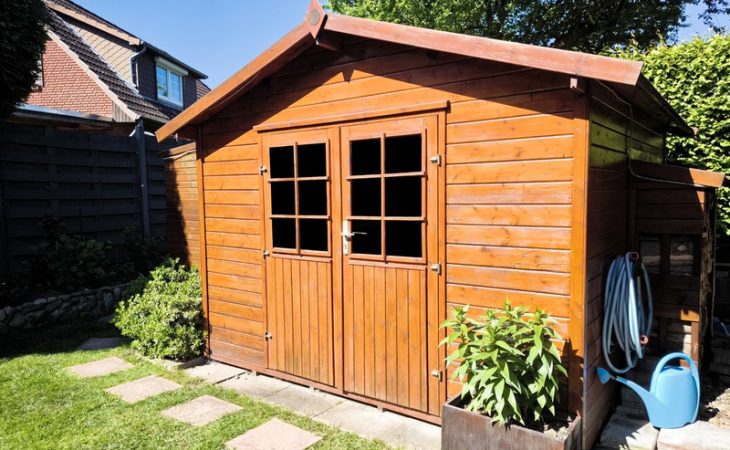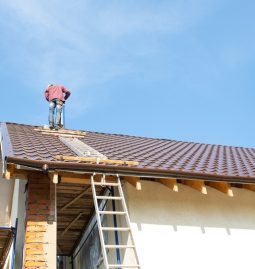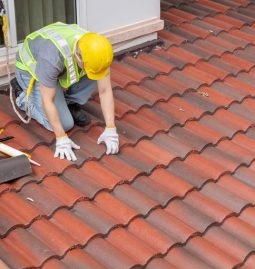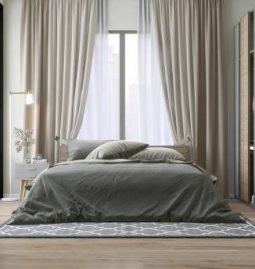Building a shed isn’t just about extra storage space; it’s about choosing the right materials that suit personal needs and climate conditions. Selecting the perfect shed material involves understanding the benefits and drawbacks of each option, especially for those seeking durability, aesthetic value, and minimal maintenance. Exploring all material choices ensures that the decision meets every requirement, whether budgetary, environmental, or practical. This guide will simplify the process, offering clarity on which shed material aligns with specific needs and expectations.
Top Shed Material Options
Choosing the right material for a shed involves evaluating what each material offers in terms of durability, cost, and maintenance. Here are some popular options:
-
Wood
-
Metal
-
Plastic or Resin
-
Composite
Wood Sheds
Wood is a traditional material option for building sheds, favored for its aesthetic appeal and versatility. It can be customized to fit any garden design, providing a natural look that many appreciate. There are benefits that make wood a sought-after choice, including:
-
Customizable designs for windows, doors, and shelving for functional needs.
-
Natural insulation properties provide a stable temperature inside the shed.
-
Various wood options like cedar and redwood offer resistance to decay and insects.
However, wood requires ongoing maintenance, such as staining or painting, to protect against weather damage. Considering the level of care required is essential when choosing wood as a shed material.
Metal Sheds
Metal sheds serve as a practical, low-maintenance option that is ideal for anyone who prioritizes durability. They are typically constructed from steel or aluminum and offer several advantages:
-
Resistant to rust, pests, and fire, contributing to an extended lifespan.
-
Lightweight yet sturdy structures that stand firm against harsh weather conditions.
-
Require minimal upkeep to maintain their appearance and functionality.
The primary drawback of metal sheds is that they might not provide the aesthetic appeal of a wooden shed, and they can become quite hot without proper insulation in warm climates.
Plastic or Resin Sheds
Plastic or resin sheds are becoming increasingly popular due to their ease of use and maintenance-free nature. These sheds cater to a modern preference for lightweight yet durable materials, offering advantages such as:
-
Resistance to UV rays and moisture, resulting in a long-lasting product.
-
Ease of assembly with lightweight parts that fit together seamlessly.
-
No maintenance is required beyond occasional cleaning to keep them looking fresh.
While they are cost-effective and convenient, plastic sheds might not offer the same customization possibilities as wooden sheds, which can be a consideration for those seeking specific design needs.
Composite Sheds
Composite sheds combine multiple material benefits, providing a balance between appearance and durability. They are an excellent choice for anyone who values aesthetic appeal and functionality. Key features include:
-
Durability and resistance to weather, pests, and decay ensure a lengthy lifespan.
-
Low maintenance requirements make them an attractive option for busy individuals.
-
Versatile and stylish finishes replicate the appearance of real wood while offering easier care.
Although composite sheds may come with a higher upfront cost, they provide an excellent blend of durability and style, making them a worthwhile investment.
Shed Material Selection Considerations
Several factors play a role in selecting the ideal shed material. Here are a few that deserve attention:
Budget
Understanding budget constraints is essential when choosing shed materials. Wood, for example, might incur higher initial costs due to its customization and appealing looks. In contrast, metal and plastic options often provide more affordable alternatives, reducing long-term expenditures. Balancing costs with desired features and benefits will guide the decision-making process.
Maintenance and Durability
Time and effort for maintenance should be factored into the material decision. Wood requires more ongoing care, such as staining, than metal or plastic options. Evaluate whether the shed will be subjected to harsh weather conditions and choose materials accordingly to minimize upkeep while ensuring longevity.
Environment and Climate Compatibility
The surrounding environment and climate play a significant role in selecting a shed material. Metal sheds, for example, are ideal for pest-prone or humid areas due to their inherent resistance to decay. Conversely, they can become warm under direct sunlight. Understanding these properties ensures the material aligns with the specific environmental conditions where the shed will be located.
Intended Use and Functionality
The intended use of the shed can heavily influence material choice. For example, sheds serving as workshops may prioritize insulation, which wooden materials provide effectively. On the other hand, plastic sheds cater to those primarily seeking a simple storage solution. Tailoring the material selection to the intended use ensures the shed fulfills functional and aesthetic goals. The design may also complement other structures to integrate the shed into existing spaces seamlessly. These can be done by companies such as The Shed Company in Ontario.
Supplier Selection and Installation Tips
Once the desired material has been selected, identifying a reliable supplier that provides quality products is vital. Suppliers like those offering wooden shed products are recognized for providing various choices and exceptional support. Reading customer reviews and assessing different companies will ensure satisfaction with the selected material.
Evaluating the installation process is equally essential. Plastic sheds often provide straightforward assembly, while metal structures may necessitate professional installation due to their complexity. Ensuring a level and clear area for placement guarantees stability and safety. A reputable supplier often offers additional support, easing the installation process.
Personalization and Accessories
Transforming a shed space involves adding accessories and customization options that enhance its functionality and appearance. Customization ranges from adding windows and shelves to implementing solar panels and insulation. Here are some possibilities:
-
Windows add light, transforming the shed into a pleasant working space.
-
Shelving and storage solutions keep tools and items neatly organized.
-
Electrical outlets and solar-powered lighting enable electricity-free operations.
-
Optional insulation creates a comfortable year-round environment.
-
Aesthetic choices, such as color finishes, reflect personal tastes.
Customization possibilities often depend on material adaptability. Wooden sheds typically provide more opportunities for alterations, while plastic options prioritize simplicity and ease of use.
Environmental Sustainability Considerations
Sustainability factors increasingly influence shed material selection. Optimal choices come from recycled or renewable materials. Wood, when responsibly sourced, is a renewable option that reduces environmental impact. Exploring whether materials are recyclable after use or have longevity further contributes to a sustainable choice.
Suppliers offering sheds in Ontario emphasize sustainability and environmental consciousness. Selecting a long-lasting material minimizes resource use, supporting a more sustainable future. By making environmentally friendly choices, each individual contributes positively to reducing their carbon footprint.
Embracing the Right Choice
Ultimately, selecting the perfect shed material means balancing personal preferences, functionality, and budget. Reviewing each material’s benefits and limitations, alongside budgetary and maintenance considerations, helps align the choice with individual needs. The ideal shed material complements the property, offering durability and aesthetic value for years of enjoyment.
Closing Remarks
Choosing the right shed material involves considering various factors, including cost, style, maintenance, and environmental impact. An informed decision ensures a shed that meets expectations and continues to serve its purpose effectively. Collaborating with trusted suppliers guarantees access to quality options and insights. Careful consideration and planning will result in a durable, aesthetically pleasing shed that aligns with specific needs and preferences.








